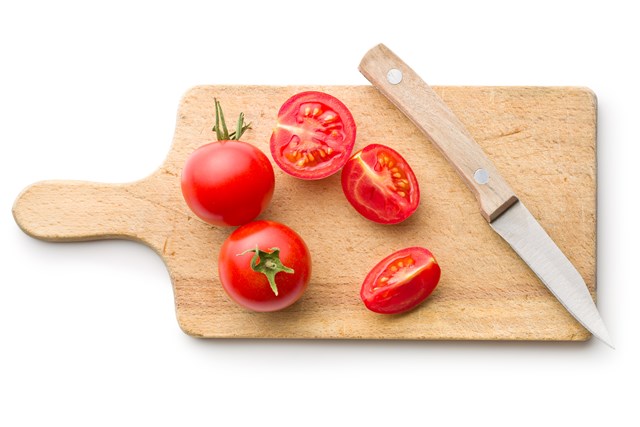There could be hot-pink eggplants and potatoes, too, with some added health benefits.
Tomatoes are red. Sometimes they're orange or yellow or even purple. But they're never hot pink—until now, that is. Scientists recently discovered a way to change the flesh color of a few different items in the produce aisle—and their new hues boast a bevy of surprising production and health benefits.
A recent study by Weizmann Institute of Science scientists uncovered an unknown gene in betalains, nutritious red-violet and yellow pigments heavy on antioxidants and used most commonly for food dyes. With the discovery of that new gene, the scientists created a yeast that would produce betalains, and then reproduced betalain synthesis in edible plants and (inedible) flowers, including potatoes, tomatoes, eggplants, petunias, and tobacco.
These plants don't naturally produce red-violet and yellow pigments, but with the betalain synthesis, the edible plants produced red-violet flesh and skin, the petunias bore petals in pale violet, and the tobacco grew with yellow and orange-pink flowers, the scientists say.
But the research wasn't just about brightening up the produce aisles of our grocery stores or creating more variety in our florist shops. Rather, the edible plants that changed hues also got healthier: their antioxidant count soared 60 percent higher with the betalain.
"Our findings may in the future be used to fortify a wide variety of crops with betalains [to] increase their nutritional value," lead study author Asaph Aharoni said in a statement.
What's more, the researchers also realized that betalains protect plants against gray mold, which, according to this study, costs us billions of dollars each year in agricultural losses. In betalain-producing plants, however, gray-mold resistance rose by a staggering 90 percent.
Lastly, the betalains the scientists produced do not exist in nature. And that's a very good thing, according to Guy Polturak, a former research student who worked on the study. "Some of these new pigments may potentially prove more stable than the naturally occurring betalains," he said in a statement. And, "this can be of major significance in the food industry, which makes extensive use of betalains as natural food dyes, for example, strawberry yogurts."
If anything it'll make some very Instagrammable salsa.

